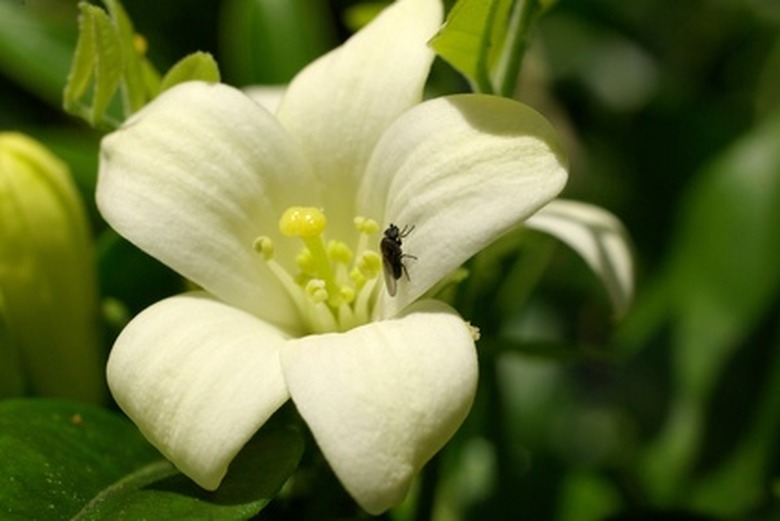Diseases To Mock Orange Plants
Mock orange trees (Philadelphus species) are susceptible to a variety of bacterial and fungal diseases, some of which are not treatable with chemical control. For prevention of disease, particularly those that cannot be chemically treated, keep your mock orange trees healthy and vigorous through proper maintenance. Always sanitize pruning tools between cuts to avoid the transfer of disease pathogens.
Gray Mold
Gray mold is a fungal disease that affects mock orange plants. Caused by the fungus Botrytis cinerea, as well as other species, gray mold usually inhabits dead plant tissue and then invades stressed or weakened parts of its host plant. Healthy plants with wounds are also vulnerable to infection, according to the University of Illinois HortAnswers. Blight may occur on all parts of the plant and, as the name suggests, in humid conditions, a gray-hued web-like substance forms on the affected plant parts, resembling gray mold. Since there is no recommended chemical control cure, the best management solution is the collection and destruction of diseased plant parts; removal of infected tissue also helps prevent spread of disease.
- Mock orange trees (Philadelphus species) are susceptible to a variety of bacterial and fungal diseases, some of which are not treatable with chemical control.
Nectria Twig Blight
Nectria twig blight is a fungal disease of mock orange trees. Caused by the fungus Nectria cinnabarina, the infection appears as cankers on mock orange plants; cankers are areas of infected, dead tissue, according to West Virginia University at Davis. Leaves die and severe shoot death may occur. Reddish growths may form on cankered areas.
Wounded trees in excessively humid or wet conditions are most prevalently infected; ideal temperature for fungal infection is 70 degrees F. Nectria twig blight generally causes only mild damage, so while no chemical control is recommended, management may include removing and destroying affected plant parts.
Bacterial Blight
Bacterial blight on mock orange plants is caused by the bacterium Pseudomonas syringae pv. syringae. Symptoms include spots on the plant that appear saturated with water; spots become very dark, displaying a black or brown hue, according to the University of Minnesota Extension. Bacterial blight often attacks mock orange trees when weather is cool and moisture is high. Damage consists of the dieback of shoots as well as leaf deformation. For control, remove and destroy affected plant parts and as a chemical method, apply fixed-copper chemicals labeled for use on mock orange plants.
- Nectria twig blight is a fungal disease of mock orange trees.
- Caused by the fungus Nectria cinnabarina, the infection appears as cankers on mock orange plants; cankers are areas of infected, dead tissue, according to West Virginia University at Davis.
